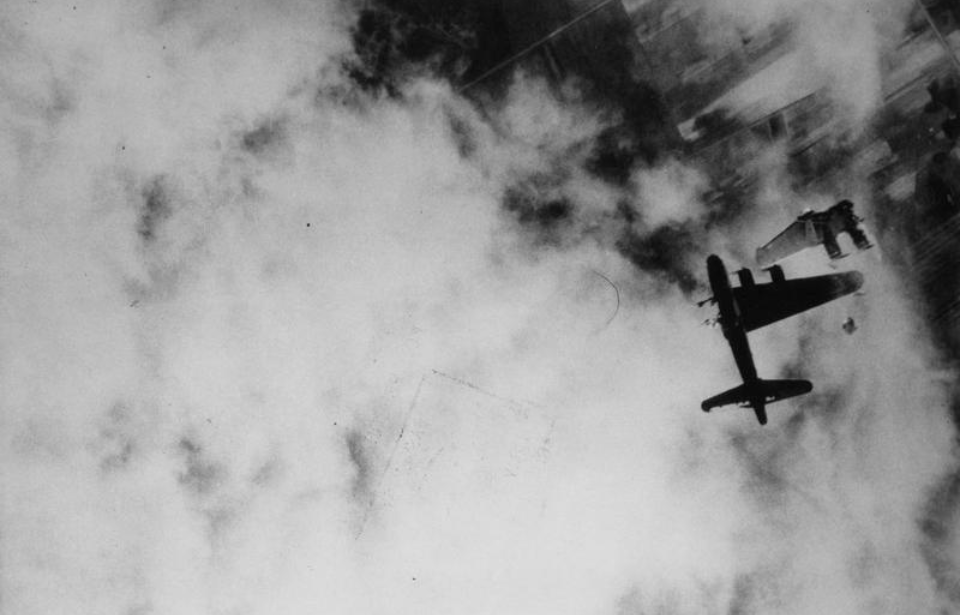In the closing stages of the Second World War, the Allied forces launched a barrage of air raids over Germany, in an attempt to destroy the country’s manufacturing facilities and lessen the morale of its citizens. One such bombing occurred on April 8, 1945 and resulted in the loss of the American-flown Boeing B-17G Flying Fortress Wee Willie. The aircraft’s descent after being struck by German flak was captured on camera, producing both stunning and horrific images.
Boeing B-17G Flying Fortress Wee Willie
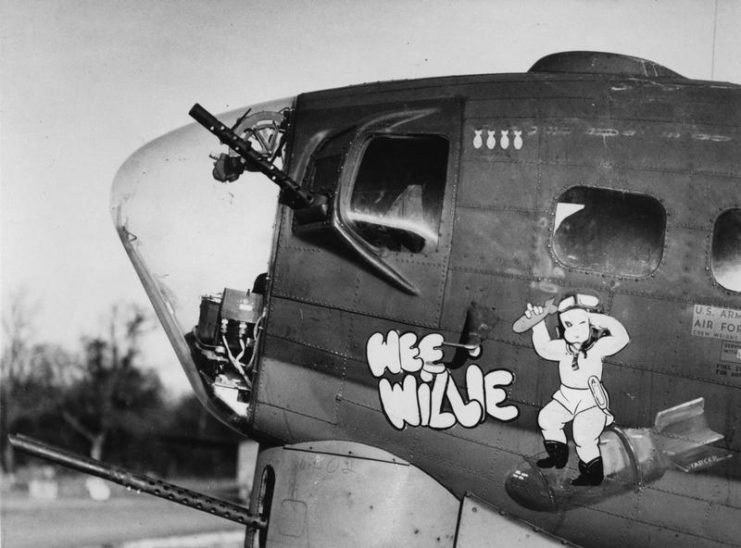
Wee Willie – B-17G-15-B0, serial number 42-31333 – was the 302nd B-17G Flying Fortress to roll off the production line at Boeing Airplane Company’s Plant 2 in Seattle, Washington. In October 1943, the heavy bomber was delivered to the US Army Air Forces in Cheyenne, Wyoming, after which it was transported to RAF Bassingbourn in Cambridgeshire, United Kingdom.
Upon its arrival in the UK, Wee Willie was assigned to the 322nd Bombardment Squadron (Heavy), 91st Bombardment Group (Heavy), 1st Air Division, 8th Air Force. At the time of its downing, the B-17G was the oldest still in service with the 91st and the next-to-last one lost to enemy action before the German surrender.
Preparing to bomb German railroad facilities
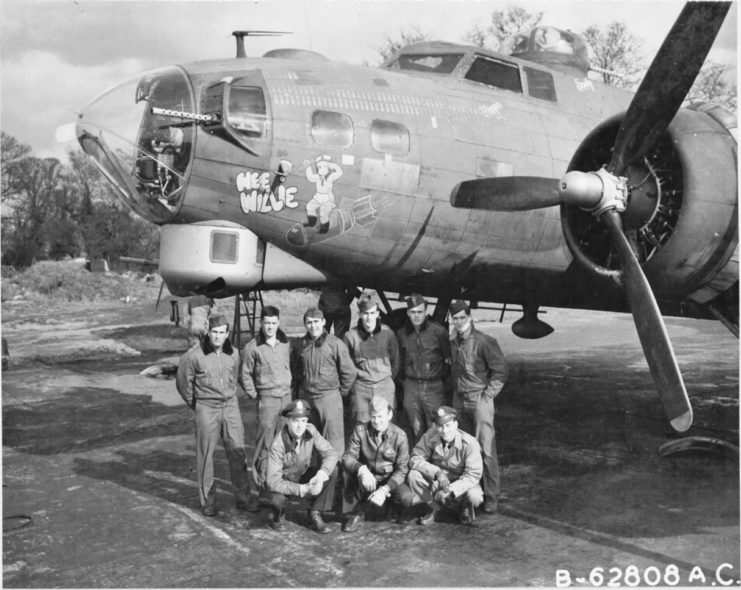
On April 8, 1945, the B-17G Wee Willie took off from Air Force Station 121 at RAF Bassingbourn for either its 128th or 129th mission (sources vary). In command was US Army Air Forces 1st Lt. Robert E. Fuller, with Sgt. Le Moyne Miller, 2nd Lt. Woodrow A. Lien, Staff Sgt. James D. Houtchens, Tech. Sgt. Francis J. McCarthy, Staff Sgt. Ralf J. Leffelman, Staff Sgt. Wylie McNatt Jr. and Staff Sgt. William H. Cassiday making up the rest of the combat crew.
The 332nd Bombardment Squadron (Heavy) was part of a 73-bomber group tasked with launching a raid on the repair facilities at the railroad marshaling yards in Stendal, Saxony-Anhalt, Germany. Given the cloudy conditions, the aircraft were made to locate their targets with H2S ground search radar, while also bypassing the moderate anti-aircraft fire coming from the ground.
Downing of the Boeing B-17G Flying Fortress Wee Willie
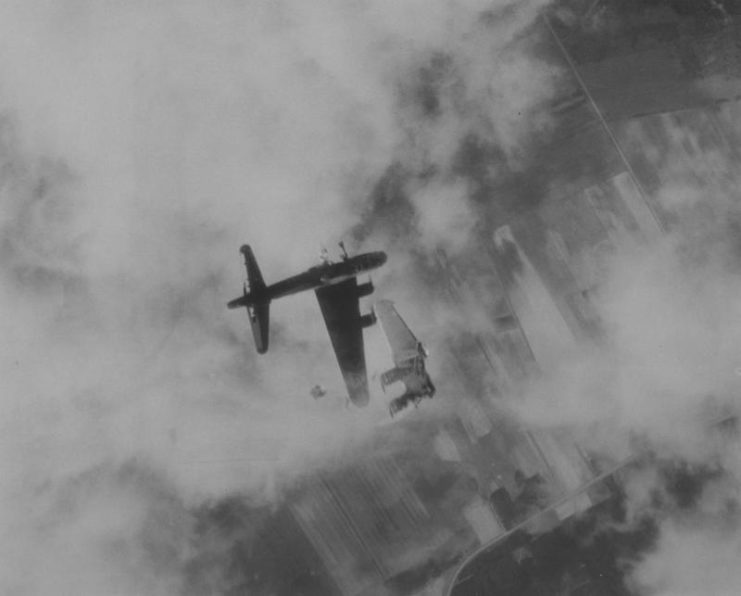
The German anti-aircraft fire managed to cause minor damage to 13 Allied bombers and major damage to another four. Of the 73 that took part, only two were a complete loss, including the B-17G Wee Willie. The aircraft was struck by 88 mm flak fire between its #2 engine and bomb bay, resulting in it immediately entering a vertical dive.
A witness to the incident further explained what happened after the strike, writing in a statement, “The fuselage was on fire and when it had dropped approximately 5,000 feet [1,524 meters] the left wing fell off. It continued down and when the fuselage was about 3,000 feet [914.4 meters] from the ground it exploded and then exploded again when it hit the ground.”
Of Wee Willie‘s nine-man crew, only Lt. Fuller survived, with reports stating that the first explosion blew him out of the cockpit, after which he managed to open his parachute and land safely on the ground. Unfortunately, he was immediately taken prisoner by the Germans. His fate after this point is unknown.
The entire incident was captured on film by an automatic strike camera aboard another B-17 involved in the raid. Such equipment began operating as soon as the first bombs were dropped and continued to capture photographs until they either ran out of film or had reached the number of images they’d been programmed to take.
Loss of the Boeing B-17G Flying Fortress Times A-Wastin’
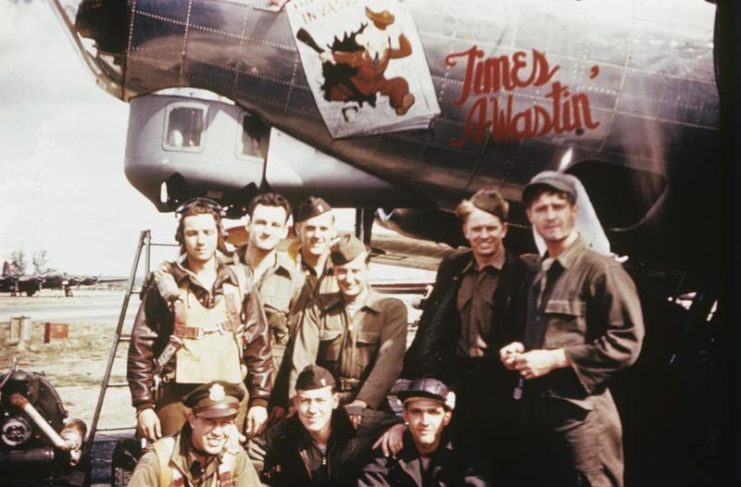
The second bomber taken out during the air raid was the Boeing B-17G Flying Fortress Times A-Wastin’ – B-17G-50-B0, serial number 42-102504 – flown by the 401st Bombardment Group (Heavy). It was piloted by US Army Air Forces Lt. Peter Pastras, and its loss was witnessed by Lt. Mike Fodroci, a navigator serving aboard another B-17.
According to Fodroci, Times A-Wastin’ was struck by German flak in its open bomb bay, which he suspects immediately killed Pastras. “The ship pulled up and veered to the right, climbing directly over our ship,” he recounted. “Captain Shelby put our ship into a dive so steep that I was thrown up against the astro hatch of the ceiling of the nose – seems I hung there for a brief second or two.
“I also observed that a bad fire was burning on the aircraft’s forward bomb bay area and that the co-pilot was trying to climb out of the small window with his back pack on,” Fodroci continued. “Somehow, we saw three chutes emerge from #504 as she spun toward the earth.”
Of those aboard Times A-Wastin’, all but two were killed. The crew members who survived, radio operator Bob A. Smith and flight engineer/top turret gunner Lyle Jones, met a similar fate to Lt. Fuller and were taken as prisoners of war (POWs) by the Germans.
Despite the loss of two bombers, the mission was deemed a success
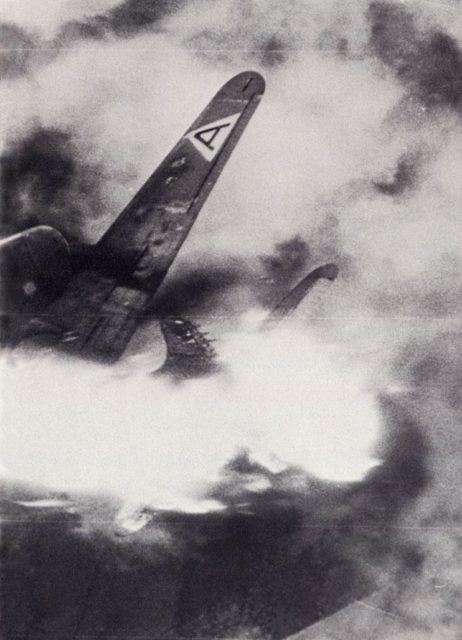
Despite the loss of the B-17Gs Wee Willie and Times A-Wastin’, the raid over Stendal was deemed a success by those involved. According to the 322nd Bombardment Squadron (Heavy)’s official report, the bombs dropped on the railroad marshaling yards succeeded in hitting their targets.
More from us: What Is the Real Story Behind WWII’s Famous Crying Child-Soldier Photograph?
Want War History Online‘s content sent directly to your inbox? Sign up for our newsletter here!
As for Wee Willie, the bomber has forever been immortalized in the images captured that day. For many, the photo of the B-17G having lost its left wing is among the most impactful images to come out of the Second World War, as it shows the danger Allied servicemen continuously put themselves in to ensure victory over Germany.
